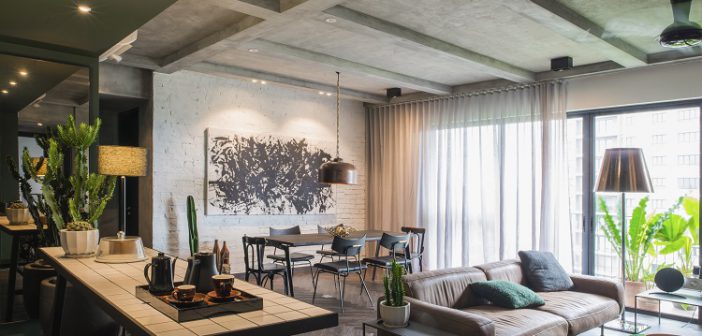Home should be a safe place for your kids to play and grow. You shouldn’t have to worry about their well-being. The good news is there’s plenty of simple solutions to childproof your residence. Follow these tips to improve the safety in five different areas of your home!
-
Safety in the Bathroom
To help your child not slip in the tub as they step in, install nonskid stickers. Place nonskid bathmats outside of the tub to ensure a safe exit for your child. This will lower the risk of falls in the bathtub. Always supervise your child while they’re in the tub to eliminate the chance of drowning.
To prevent the chance of burning, always test the temperature of the water before you allow your child to enter the tub. You’ll want to aim for bathwater temps around 100º F. Warm water is best, but if it gets too hot, you could risk burning or scalding your child. To prevent this risk, lower your water heater thermostat to 120º F. You can also purchase rubber duckies that sense the temperature and warn if the water is too warm.
Store medicines, electrical devices, and cosmetics in drawers and out of the way of children. If your child likes to get into drawers, you can install individual child locks on cupboards or place a doorknob cover over the bathroom door and ensure you keep it shut whenever you’re not present. Toilet cover locks are also available to childproof that area of your bathroom.
-
Safety in the Living Room
Electrical safety is a priority in all rooms of your house. Tuck away all wires and ensure none are damaged or frayed. When in doubt, contact a qualified professional who can resolve your electrical issues. You can rest assured an electrician will be able to resolve your problems, and you won’t need to risk your child’s safety or that of your own.
Anchor your TV and your stand with a wall strap. This ensures your child can’t accidentally tip the television on top of them, putting them at significant risk. There are also anchoring straps available for all heavy furniture. It’s a wise investment to purchase straps to anchor furniture to your walls, especially as your children learn to climb and have the desire to explore their surroundings.
If your window blinds have cords, ensure you safely pin them up from small, prying hands. You can make minor fixes to all blind lines in your house to make them a safer option, but know that the safest pick is to go with cordless blinds. Installing blind cord cleats, wraps and tassels, which you can find at a hardware shop, will also do much to eliminate the risk of strangulation cords can present.
-
Safety in the Kitchen
To limit your child’s risk of touching hot liquids in pots and pans, try cooking on the back burners on your stove. Improve your child’s safety by teaching them that the stove is hot and why they shouldn’t touch it. If you find your child is curious and enjoys opening the oven, you can install a lock. Most are simple to install, heat resistant and you can remove it once your child learns the risk of opening the oven when it’s on.
Keep all knives, scissors and dangerous utensils out of reach of children. Store cleaning products and toxic chemicals beneath your kitchen sink and install a childproof lock. In an emergency, it’s wise to have a fire extinguisher easily accessible in your kitchen. Ensure all adults know where it is and how to use the extinguisher.
-
Safety on the Stairs
To limit falls, always supervise your child going up and down the stairs. As children grow older and more independent, you can stand at the top or bottom of the stairs to guarantee their safety. Purchase baby safety gates to put at the top of the stairs to prevent your child from attempting them alone. Baby gates are a great option to prevent your child from wandering from any room.
-
General Safety Tips
Install smoke alarms inside each bedroom, in the hallway outside sleeping areas and on each level of the home. If possible, use interconnected smoke detectors, so when one raises the alarm, all will follow. Test your detectors each month and replace your batteries each year. After your units are ten years old, it’s time to replace the sensors.
Carbon monoxide (CO) poisoning affects children more severely than adults. Thankfully, you can prevent the harmful risks of CO in your home. Ensure you have a CO detector installed on every level of your home–you’ll want to guarantee you have one outside your sleeping area. Check your detector each month to test the batteries, and don’t ever use gas appliances inside your home.
Because children manage to get into everything, it’s safest not to keep a gun in your home. However, if you must keep it, lock up the firearm at all times. Consider getting a safe and hide it from your child. As an extra means of security, lock up the gun and bullets in a separate location.
A Safer Home Means Safer Kids
When you take the extra steps of childproofing your home, like hiring an electrician to fix your frayed wires or installing a lock on your oven, you choose to invest in the safety of your children. Get started making your home a little safer today!





Some people think that having relationships with your mate’s acquaintances is a straight way to destroy the friendship. But 40 singles that’s a teenager’s point of view. 40+ singles are mainly interested in mature, serious relationships that would meet their expectations and requirements. Who knows you better than your friend? He or she may introduce you to a good reliable person who shares your interests (and friends! which means a lot).
The information article, it was very helpful! I simply began in this and I’m attractive more familiar with it better! Thanks, keep doing amazing. here my site: Automatic capsule filling machine suppliers
My number one tip is to throw away unwanted items or old items that may no longer be safe. Sites like this one can help you fix this problem quickly. Also, consider new furniture with smooth corners that are safe.
Summer is on the way, which means that soon children will start spending more time outside. Don’t forget to tell your children how important it is to be careful near water, especially if you have a swimming pool. Along with the vast benefits of the pool, it also poses a danger. Many children drown in home swimming pools every year.